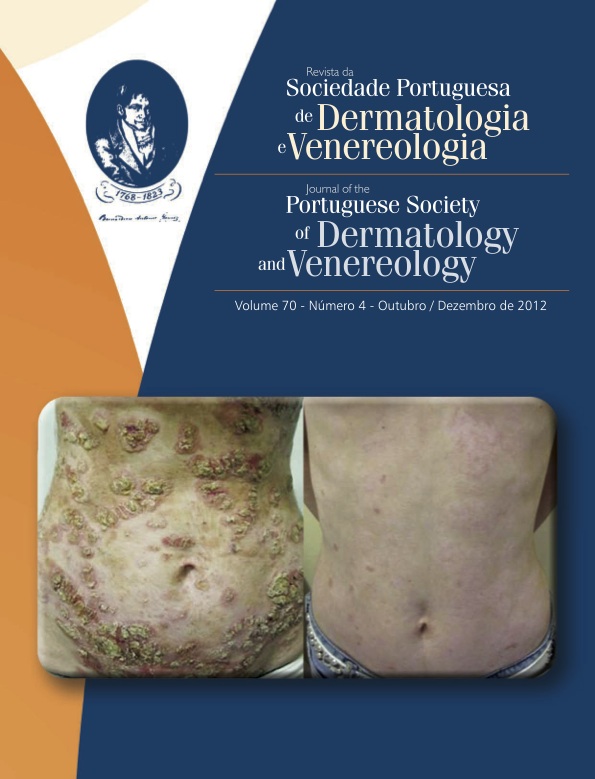BACTERIAL POPULATION ISOLATED IN OVER-INFECTED CHRONIC LEG ULCERS – CHARACTERIZATION OF THE ANTIMICROBIAL SUSCEPTIBILITY PROFILE
Abstract
Introduction: The chronic leg ulcers (CLU) are frequent reasons for indiscriminate antibiotics prescribing which has contributed to increase the bacterial resistance to many drugs. Objective: Retrospective characterization of the bacterial population and antimicrobial susceptibility profile in patients with CLU admitted between 2007 and 2011 (5 years). Methods: Review of clinical charts and statistical study of the variables gender, age, etiology and location of the ulcers, species and antibiotic profile. Results: Seventy-eight swab specimens from 23 (31%) men and 51 (69%) women (both gender mean age of 70.5 years) were sent to the medical microbiology laboratory. The cultures were posi- tive in 72 (92.3%) cases, being isolated 13 species. Pseudomonas aeruginosa (n=34, 47.2%), Proteus mirabilis (n=11, 15.3%), Staphylococcus aureus (n=10, 13.9%), being methicillin-resistant Staphylococcus aureus (MRSA) seven (70%), and Enterobacter cloacae (n=5; 6.9%) were the most observed. For the former, the antimicrobial profile was as follows: piperacillin/tazobactum (92%), ceftazidime (90.6%), gentamicin (92.9%), imipenem (96.7%), meropenem (100%) and ciprofloxacin (53.3%). For the second one: piperacillin/tazobactum (75%), amoxicillin/clavulanic acid (77.8%), cefo- taxime (100%), ciprofloxacin (22.2%), cotrimoxazol (36.4%) and meropenem (100%). For the third one: ciprofloxacin (11.5%), cotrimoxazol (80%), vancomycin (80%), fusidic acid (90%), linezolid (100%) and tigecycline (100%). For the lat- ter one: piperacillin/tazobactum (80%), ceftazidime (80%), cefotaxime (80%), gentamicin (100%), ciprofloxacin (100%), cotrimoxazol (80%), imipenem (100%) and meropenem (100%). Conclusion: The Gram-negative bacteria were the main isolated agents. In general, meropenem, cefotaxime, linezolid and tigecycline showed greater sensitivity for the tested agents.
KEYWORDS – Leg ulcer; Anti-bacterial agents; Drug resistance; Pseudomonas aeruginosa; Proteus mirabilis; Staphylo- coccus aureus.
Downloads
All articles in this journal are Open Access under the Creative Commons Attribution-NonCommercial 4.0 International License (CC BY-NC 4.0).








